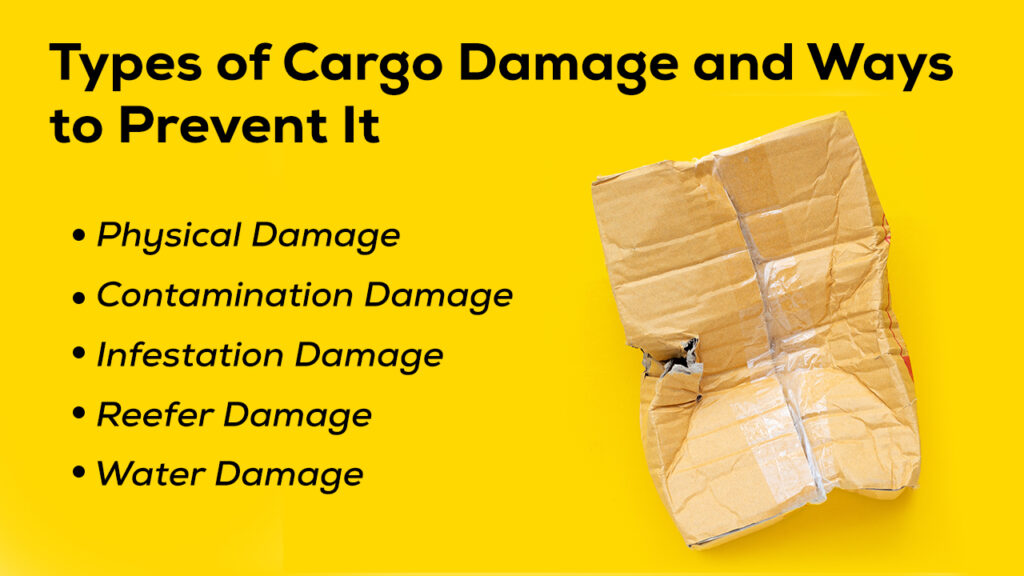There are different approaches wherein manufacturers and providers can be afflicted by cargo damage at some stage in transit. First, damaged objects usually go for alternative or complete refund that incurs extra prices yet will have an effect on each carrier’s and the seller’s reputation.
Secondly, parts, components, and equipment that are damaged regularly result in wasted time. This is why freight delivery companies want to ensure that equipment, tools, and other cargo are safe from harm, thinking of elements inclusive of handling, temperature, humidity, vibration, contamination, impact, and static charges.
Types of cargo damage
The containers are physically handled at multiple locations by different parties before reaching the final destination. Let’s take a look at the five types of cargo damage.
Physical Damage
Physical harm happens because of rolling, breakages, dropping, bumps, and being knocked. Damages additionally arise due to poorly deliberate stowage, including loss of dunnage and lashing. Poor stowage also consists of insufficient, wrong, and incorrect lashing, including loss of lashing substances and now no longer sufficient chocking. Lastly, horrific stowage consists of inappropriate loading and bad weight distribution which influences stability.
Contamination Damage
Contamination takes place while shipment has been uncovered to poisoning or pollution, rendering items dangerous for operational or commercial utilization and human consumption. There are many approaches wherein shipment may be made impure, which includes wrong garage and publicity to polluting agents, insufficient separation from different forms of shipment, bad cleansing after preceding shipment, etc.
Infestation Damage
The presence of animals or bugs in shipment can purpose infestation harm, particularly in agricultural products. It can render shipment wrong for human utilization or purpose transit delays because of inspections with the aid of using the port authorities.
Reefer Damage
Refer-associated harm usually takes place because of strength failure or mishandling of cargo. Damage consists of discoloration of products, off-size, bruising, over-ripening, thawing, and decay. Common reasons encompass bad air circulation, wrong stowage, accidental human error, and insufficient temperature controls at some stage in refrigeration delivery services.
Water Damage
Damage can arise when items are uncovered to seawater regress, moist conditions, humidity, and water. Ships sail thru special climatic zones, which include greater humid climates. Moisture can purpose “field rain” while condensing into droplets in the bins. This can bring about corrosion and rust under positive circumstances. Corrosion may be prompted because of flooded delivery holds, holes withinside the bins, broken sealing gaskets, and the absence of right desiccants.
How to Prevent Cargo Damage
Importers, producers, shippers, and freight forwarders have to take measures to decrease the danger of harm and related operational and economic losses. To limit motion and shield shipment, it’s far critical to apply the right dunnage cloth and lashings. Also, frozen shipments have to be inspected for taste and shadeation changes, black spots, odor, fluid migration, desiccation, and dehydration.
Carriers want to make certain right temperature controls and legitimate inspection certificates while transporting reefer bins. The distribution of weight and stowage of shipment in bins have to be nicely deliberate. Lastly, while transporting items that are vulnerable to water harm, it’s far critical that companies pick out the best direction.

